
1978
Eric Larson and Burton Reifler open the UW Geriatric Family Services Clinic, the first clinic at the University of Washington to evaluate outpatients with dementia. The geriatrics clinic, along with outpatient clinics at the VA and Harborview Medical Center, became the primary source of research subjects in the ADRC’s budding longitudinal study.

1980
UW’s first paper on Alzheimer’s disease is a report on how the progression of dementia relates to the concentration of immune system cells. The study marks the beginning of UW’s scientific effort to piece apart the causes of Alzheimer’s disease.

1983
Rudolph Tanzi and collaborators publish a study linking Huntington's disease to a gene on chromosome 4, sparking ADRC Founding Director George Martin’s curiosity and influencing the founding of the UW ADRC. "This [genetic] linkage for Huntington's disease really turned me on to the power and possibility of linking a gene to a neurodegenerative disease," said Martin.

1984
The first NIH funded ADRC grant application is submitted. The direct costs requested for the entire proposed 5-year project period total $6,697,620. Adjusted for inflation, that is over $16 million today. In the grant, George Martin wrote: A major impact of the proposed ADRC will be to galvanize a subset of the geneticists and molecular biologists to channel their energies towards the elucidation of the pathogenesis of familial forms of Dementia of the Alzheimer’s Type. Another major impact will be to bring together investigators and practitioners from a wide variety of disciplines. This has, in fact, been accelerating rapidly as a result of preparations for this application and has been a source of considerable satisfaction to clinicians and basic scientists.
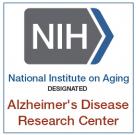
1985
The UW ADRC is established as one of the first 10 Alzheimer’s Disease Centers originally funded by the National Institute on Aging, under the founding directorship of George Martin. Each directorship transition over the next 35 years would shift the ADRC’s major research themes and contributions. From Directors George Martin, MD (1985-1999) to Murray Raskind, MD (1999-2012), to Thomas Montine, MD, PhD (2012-2016), to Thomas Grabowski, MD (2016 – present, as of 2020), the Center built historic strengths in genetics and genomics, caregiving programs, fluid biomarkers, and neuropathology, and newer strengths in cell biology, stem cell model technology, genetic profiling of neurons, and brain imaging, along with transformative dementia-friendly community outreach at the UW Memory and Brain Wellness Center (MBWC).

1986
Dimensions newsletter inaugural issue is published, with the mission to link the public to ADRC information, outreach, and research opportunities. The title “Dimensions” was chosen to reflect the many stages and faces of Alzheimer’s disease. Blue ink on yellow paper is thought to be most readable for people with dementia. Explore today's editions and past archives.

1987
Eric Larson and Bud Kukull are awarded an NIA grant to start an epidemiological model of an Alzheimer’s incident case registry, similar to cancer registries. The Alzheimer’s Disease Patient Registry is established. Named the Adult Changes in Thought study in 1994, it follows the lives and wellness of thousands of individuals in Seattle as they age to better understand sources of risk and resilience.

1988
An External Advisory Board comes to the ADRC for the first time to offer suggestions and critiques to prepare for submitting the Center renewal application. Members included Fred Plumb, Tony Phelps, Marilyn Albert, Amico Bignami, Kevin Cain, Robert de Mars, and Sherman Weissman.
The ADRC funds the first 4 pilot projects, enabling young investigators to develop new areas of knowledge about Alzheimer’s disease. Now called Development Projects, these funding awards, focused on junior investigators, are as robust as ever.

1989
The ADRC becomes a key gateway for patients to the fifty-five support groups running in WA State, mostly hosted by the local Alzheimer’s Association. Visit the WA State Chapter of the Alzheimer's Association.
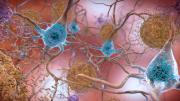
1991
NIA grants ADRC $5,100,000 over the next five-year funding cycle (adjusted for inflation, that is over $10 million today). The funding supports the Center’s community engagement and research projects, chiefly the search for Alzheimer’s disease-causing genetic variants that requires cross-discipline expertise.

1992
The ADRC launches a mobile clinic led by Soo Borson, MD that would travel and assist underserved communities in King County and establish ties with diverse community organizations in the Seattle area, for the first time. (Picture date, 2007)
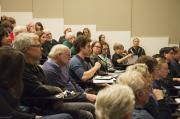
1993
The ADRC expands its research seminar program to include faculty, postdoctoral scholars, and medical staff at the UW, Seattle Veterans Affairs GRECC, and Harborview Medical Center. They will be held on a bi-monthly basis. Learn about the present-day ADRC Seminar Series.

1994
The ADRC joins a multi-site research study comparing the success of pharmaceuticals and behavioral management techniques in the treatment of agitation in Alzheimer’s disease. Linda Teri, Rebecca Logsdon, Murray Raskind, and Elaine Peskind are the Principal UW Investigators. Explore currently enrolling clinical trials and studies. Read: Agitation Antidote

1995
NIA awards the ADRC a $8,100,000 grant for next 5 years. Adjusted for inflation, that is over 13 million today. The funding goes towards research on neurogenetics, brain structures involved in stress and agitation, proteins involved in Alzheimer’s disease, APOE animal models, and investigations of estrogen’s possible neuroprotective effects.
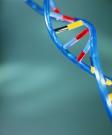
1996
Faculty and colleagues publish what becomes the most highly referenced paper in ADRC history, with 2,998 citations as of fall 2020. The study shows that 3 different Alzheimer’s-causing mutations are associated with significantly elevated concentrations of amyloid beta in blood plasma. The finding suggests that all of these mutations result in Alzheimer’s through a common pathway. ADRC researchers also identify a mutation in the Tau gene and published the first report of a genetic cause of the neurodegenerative disease frontotemporal degeneration.

1998
The ADRC website launches, making it easier to learn about and get involved with Alzheimer’s research. Today, you can visit uwadrc.org

1999
Murray Raskind succeeds George Martin as Director, bringing a focus on clinical trials and traumatic brain injury's effect on cognition.

ADRC researchers create the first transgenic mouse with a presenilin-1 mutation, opening up a new avenue for investigating the biology of the Alzheimer’s-causing gene in a living organism. They demonstrate that the genetic change causes overactivation of neuronal receptors and subsequent neurodegeneration.

The National Alzheimer’s Coordinating Center, funded by the NIA, originates in the UW Department of Epidemiology in 1999, with the ADRC's Gerard Van Belle and Walter Kukull. NACC promotes collaborative research across Alzheimer’s Disease Centers and is a freely available data resource to researchers.

2000
ADRC funding renewed by NIA for $11,200,000 over the next five-year period (adjusted for inflation, that is over $16 million today). The funding supports new projects to investigate the effects ofinsulin and cortisol on memory and other cognitive abilities in Alzheimer's disease and normal aging; the potential neuoprotective effects of insulin, and the role of the amyloid precursor protein in Alzheimer's disease.

2003
ADRC investigator Karen Swisshelm begins a new cell-culturing project. As project leader of the ADRC's Cell and Tissue Bank, she oversees a bank of blood and skin fibroblast lines from specimens derived from patients. She and her colleagues are working to develop ways to grow large numbers of cells that have characteristics important in studying Alzheimer's disease. Fast-foreward to the present day and read: Presto-Change-o! Neurons in A Dish to learn about how human-derived stem cell technology promises to accelerate the search for Alzheimer’s disease therapeutics at the ADRC.

2004
ADRC makes a push to promote caregiver self-advocacy, drawing from the National Family Caregivers Association. They make caregiving and self-care key topics of the 19th ADRC Public Forum. Today, the clinic team at the UW Memory Brain Wellness Center offers programs and resources to help people experiencing memory loss, and their families and caregivers, to navigate challenges and find opportunities to harness inner strengths and enhance well-being in any stage of dementia. Here, you’ll find our handbook, Living with Memory Loss: A Basic Guide.

2005
With consultation from ADRC's Rebecca Logsdon, the WA Department of Social and Health Services starts a project to develop dementia caregiving programs, as well as consultation and counseling services in order to reduce caregiver distress and improve quality of life for individuals with dementia and their caregivers.

ADRC receives a 5-year NIA funding renewal of about $15 million, enabling new research including projects to map new genes involved with late-onset Alzheimer’s disease and modify the age of onset, and work to characterize cerebrospinal fluid proteins in geriatric dementias.

2006
The ACT Study publishes a groundbreaking study which suggests that regular exercise can prevent or slow the onset of dementia in the elderly.

2007
Former and current ADRC faculty and staff successfully launch the Alzheimer’s Disease Genetics Consortium, an initiative to bring genetics data from Alzheimer’s Centers around the country together to run large-scale association studies in search of new genes influencing late-onset Alzheimer’s disease.
ADRC's Jing Zhang, Elaine Peskind, and colleagues take a major step on the path toward early and accurate diagnosis of several neurodegenerative brain diseases. Using an advanced analytical technique, they identify proteins in the human cerebrospinal fluid that may serve as biomarkers for Alzheimer's and Parkinson's diseases and Dementia with Lewy Bodies.
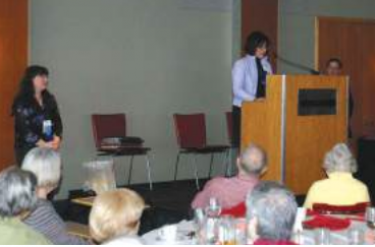
2009
The ADRC celebrates research participants by giving “The Research Longevity Award” to the oldest research volunteer who is 103 years old. “The Above-and-Beyond Award” goes to the person who has had the most lumbar punctures (spinal taps) for the biomarker studies; this award went to a volunteer who had seven. “The Research Perseverance Award” went to two people who had each participated for twenty-two years in ADRC research. Learn about research participation at the ADRC.

2010
NIA renews ADRC funding for next 5 years for $12.6 million, adjusted for inflation.

NIA funds the Pacific Northwest Udall Center for the study of Parkinson’s disease. Several UW ADRC faculty join the new Center in investigating the cognitive impairments seen in Parkinson’s disease. The present-day Pacific Udall Center is based at Stanford University and maintains ADRC collaborations.

2011
ADRC faculty and colleagues publish The Ecology of the Aging Human Brain, reporting the prevalence of disease in the brains of community adults who died without a dementia diagnosis. The study is groundbreaking in its reveal of the widespread incidence of complex, converging pathologies of brain disease in older adults without dementia.
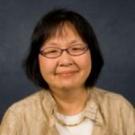
Debby Tsuang, Geriatric Psychiatrist at the UW ADRC, becomes the Director of the Geriatric Research, Education, and Clinical Center at VA Puget Sound. Tsuang continues to guide the Center’s contributions to research, education, and clinical care in aging and neurodegenerative disease.
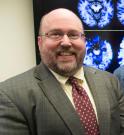
2012
Thomas Montine becomes ADRC Director. Under his leadership, the Center becomes the first ADRC in the country to focus on a precision medicine approach. Montine unites the ACT study and the ADRC through common work in neuropathology, allowing ADRC expertise to make even more scientific use of each ACT participant’s donated brain.

2013
The UW Memory and Brain Wellness Center (MBWC) opens at Harborview Medical Center with the mission of promoting the well-being of persons living with memory loss and their families, by providing exceptional care, advancing scientific understanding at the ADRC, and building dementia-friendly communities. Director Thomas Grabowski serves as a neurologist in the clinic.
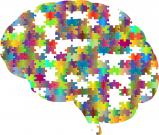
2014
Sherry Willis and colleagues publish results from the Advanced Cognitive Training for Independent and Vital Elderly Trial, the first to show that cognitive training interventions yield benefits to subjects’ cognition five years down the road and suggests those benefits transfer to improvements in daily function.
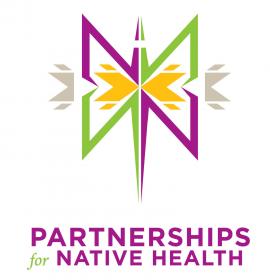
2015
A new ADRC Satellite Core, led by Dedra Buchwald, is founded to examine the risks and consequences of vascular brain injury in surviving participants of the Cerebrovascular Disease and its Consequences in American Indians Study.

2016
Thomas Grabowski, the Director of the MBWC, becomes the Director of the ADRC. He brings a new vision of “strengths-based reframing” of dementia, and a new approach to investigating biological heterogeneity based on his imaging expertise. He oversees the launch of the MBWC website and social media accounts, as well as the 5-year NIA funding renewal of about $15 million. Suman Jayadev is appointed as co-Lead of the Clinical Core with Gail Li. Kimiko Domoto-Reilly becomes Lead of the Outreach, Recruitment & Education Core; C. Dirk Keene assumes leadership of the Neuropathology Core and Targeted Testing Core. The ADRC welcomes 10 new ADRC Affiliate Members from different UW departments. ADRC programs move to Harborview Medical Center, while some scientific labs remain at the VA Puget Sound Health Care System.

ADRC/MBWC faculty led by Kristoffer Rhoads help to shape the development of the WA State Plan to Address Alzheimer’s Disease and Other Dementias, approved by the Washington State Legislature to bring about statewide innovation in dementia care policy.

Jessica Young joins the ADRC to lead an ambitious precision-medicine project: transform the skin cells of research participants into neurons with induced pluripotent stem cell technology, and study that participant’s precise, genetically determined neurobiology in a petri dish.
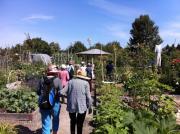
2017
The MBWC partners with Seattle Parks & Recreation to start the Garden Discovery Walks, a free program for people with memory loss or dementia, and their partners, to explore a public garden and enjoy light exercise and time spent in nature. This program is now offered virtually.
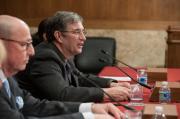
Thomas Grabowski, ADRC Director, testifies at the US Senate Appropriations Subcommittee Hearing, ‘Saving Lives through Medical Research' in Washington DC on the importance of NIH/NIA funding for Alzheimer’s research. A $400 million increase in Alzheimer’s research funding was soon signed into law, increasing NIH federal funding to nearly $1.4 billion.

The ADRC Neuropathology Core, Allen Institute, Group Health Research Institute (now Kaiser Permanente), and UW Medicine’s collaboration in the Aging, Dementia, and Traumatic Brain Injury Study results in the release of a publicly available databank resource for studying the later effects of TBI on the aging brain. Read: Tackling the Science of Brain Injury and Dementia Risk

2018
The MBWC becomes a Lewy Body Dementia Association Research Center of Excellence, a comprehensive network of twenty-four research centers to conduct Lewy Body dementia clinical trials, provide community outreach, and expand professional continuing medical education efforts around Lewy Body dementia. Kimiko Domoto-Reilly is site Principal Investigator.

The NIA commits $3.73 million to the ACT Imaging Records project, allowing researchers to gather existing MRI scan data from the ACT study's well characterized cohort of older adults. The project will illuminate how patterns of brain atrophy, as shown on MRI, relate to a person’s underlying disease pathology and type of symptoms. The findings could help researchers distinguish between different disease subtypes and diagnose with precision. The leaders of this new effort are Eric Larson, Christine Mac Donald, and Paul Crane.
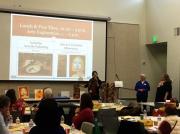
The MBWC holds the first FTD Education Day, offering resources, support, and arts showcase for people affected by frontotemporal degeneration, the leading cause of dementia under 60 years of age. The event included a showcase of art created by persons living with FTD.
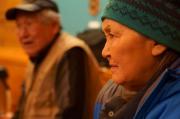
Krystal Koop (Makah)
2019
ADRC's Outreach, Recruitment, and Education Core launches the ADRC Indigenous Aging webpage, which is tailored for American Indian and Alaska Native communities. The site, found on the homepage of uwadrc.org, offers education and material resources for clinicians, community health representatives, and Native caregivers. The resources reflect the work of Partnerships for Native Health's Meghan Jernigan. Read more.

Jeffrey Iliff joins the ADRC to focus on neurodegeneration, the glymphatic system, and traumatic brain injury research. He becomes Associate Director for Research at the VISN 20 Mental Illness Research, Education, and Clinical Center at VA Puget Sound Health Care System.

Thomas Bird publishes the book Can You Help Me?: Inside the Turbulent World of Huntington Disease. This comes two years after Eric Larson, current Co-Associate ADRC Director, published his book, Enlightened Aging: Building Resilience for a Long, Active Life.
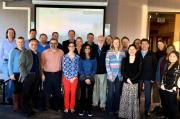
UCSF-UW ADRC Science Day, Nov 2019
The Weill Neurohub, a consortium of UCB, UCSF, UW Medicine, launches with projects in cell biology, big data, neuroimaging, and neural engineering that require combined strengths of these three public institutions. Three of the five inaugural projects have an Alzheimer’s disease focus. UW researchers include, Suman Jayadev, Jessica Young, Bing Brunton, C. Dirk Keene, and Thomas Grabowski.

2020
Amidst the new challenges and restrictions of the SARS-CoV-2 pandemic, the MBWC, in partnership with the ADRC, creates virtual adaptations of educational programs and expands video offerings. In October, Carolyn Parsey and colleagues publish a study about the effects of the pandemic on older adults, including policy implications: Caring for Washington’s older adults in the COVID-19 pandemic: Interviews with organization leaders about the state of social and healthcare services, funded by the UW Population Health Initiative’s COVID-19 Economic Recovery Research Grant.

The Memory Hub: A Space for Dementia-Friendly Community, Collaboration, and Impact is announced. Bringing together people, programs and partners, the new MBWC initiative on First Hill will operate as a vibrant dementia-focused programs and events venue, collaborative workspace and training center. This project is spearheaded by MBWC's Marigrace Becker and made possible by a leading gift from the Richard M. and Maude Ferry Charitable Foundation.

The ADRC, in partnership with the Memory and Brain Wellness Center, is gearing up to launch several new studies of potential therapeutics and treatments, under the leadership of Charles Bernick, Director of Clinical Trials. "Many patients are interested in participating in research, and we want there to be an appropriate clinical trial or study opportunity for everyone we encounter," says Thomas Grabowski, ADRC Director. Explore currently enrolling clinical trials and studies.
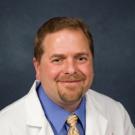
The Allen Institute, UW Medicine, ADRC, and Kaiser Permanente launch a massive new Alzheimer’s research collaboration. Supported by $40.5 million in funding over the next 5 years, the project will investigate the basic function of brain cells at the earliest stages of Alzheimer’s disease in order to find new biological clues and cellular mechanisms to inspire future research. C. Dirk Keene and Ed Lein are leaders of this endeavor.
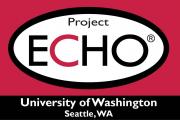
The MBWC Clinic launches UW Project ECHO Dementia (Extension for Community Healthcare Outcomes) program, a learning model in which front-line care providers in WA State learn from each other in a virtual conference room format, with input from experts in memory loss and dementia. The ECHO Dementia team is led by Kristoffer Rhoads, Nancy Isenberg, and Allyson Schrier.
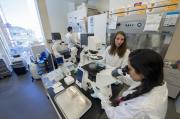
The ADRC launches the new Research Education Component for the training of scientists in the Alzheimer’s disease research field. The project is led by Jeffrey Iliff and Brian Kraemer.

The ADRC receives a $15 million funding renewal for the upcoming 5 years. This pattern of continuous NIA support speaks to the unique, intergenerational presence of scientific expertise and organizational leadership that has made the Center successful over the past 35 years—and that our current researchers, clinical specialists, and directors have the privilege of continuing into the future. •






